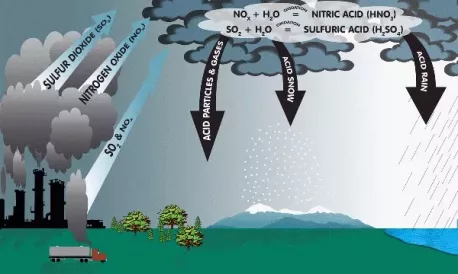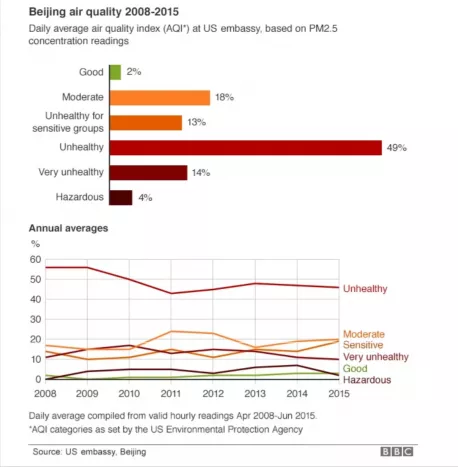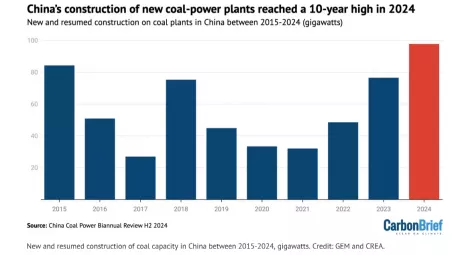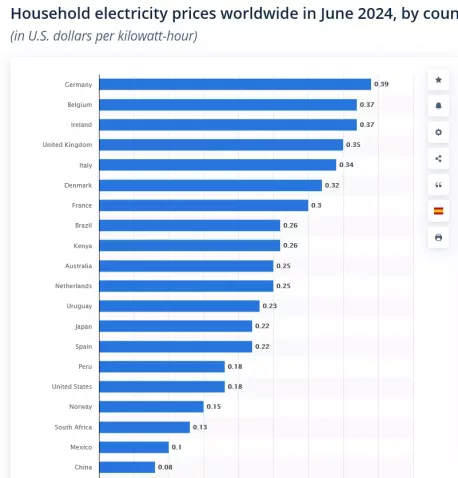Results: Both Canada and the USA are under attack for our carbon footprint and are under pressure to reduce it. Is this pressure being funded by our economic and ideological enemies? It almost seems that way.
Published on 06/20/2025
High electricity costs negatively impact both GDP and poverty. Higher electricity prices increase business operating costs, potentially leading to reduced productivity and slower economic growth. For low-income households, unaffordable energy bills can strain budgets and force trade-offs with other necessities, exacerbating energy poverty and impacting overall well-being. If we are to lower our cost of doing business to become more competitive, our cost of energy must also come down, and we have the means to do it. We have an abundance of coal and natural gas to fuel our power plants and, provided producers have a reliable market, the investment in technology to make coal a net zero energy source should not be prohibitive. Rather than allow ourselves to be labelled pollution pariahs, we should direct our focus to the countries that are the real offenders. And we have a clear target.

QUESTIONS
GO to COMMENTS
Comments
1.
1.
At one point last winter, less than 1% of my provinces energy supply was coming from renewables. A previous government had arbitrarily closed our coal fired power plants without adding alternative generating capacity. Fortunately we still had natural gas fueled power plants here and imported power from our neighbors to maintain the power grid. The switch from fossil fuels to so called clean energy has exposed some major drawbacks. Here are some of them. Which of them are worth discussing?

The electrical energy used in the manufacture of solar panels is such that it will take an estimated 20 years to offset it. This energy is not factored in when the benefits of solar power are promoted. Solar panels are not a reliable source of power due to their reliance on weather factors, their potential for damage in hail storms, and their lack of power generation in the hours of darkness. They last an average of 25 to 30 years in optimal conditions.
28%
569 votes
Wind power is effective only when the wind speed is within an optimal range. Their manufacture, transportation to their installation site, maintenance requirements and relatively short lifespan (20 - 25 years) makes them a break even energy source. Add to that their risk to wildlife, sonic pollution and ability to divert much needed wind currents, wind power is a supplemental power source at best. Many an ocean or mountain view has been spoiled by the installation of these towers. Is there anywhere left for even more of them?
30%
598 votes
Nuclear power is in no way a source of clean energy once the hazards of radioactivity, disposal of fuel rods and risk to the planet for thousands of years are factored in. Imagine if the Pharaohs had discovered and used nuclear power. If we unknowingly encountered its radioactive waste when the pyramids were excavated and explored in the 19th century, millions could have died. Nuclear power (fission) is not ready as a power source for future generations. Only nuclear fusion has a positive future but is years away.
23%
465 votes
The technology required to produce zero pollution coal powered electricity is no more difficult to achieve than the other options listed above and the waste products have multiple non polluting uses.
22%
442 votes
None
13%
261 votes
Not Interested
36%
712 votes
2.
2.
While Canada and the USA are being guilt tripped over environmental concerns by our economic rivals, we have already made much more progress while they have made almost none. When environmental groups expect us to do more when they ignore what we have already accomplished and ignore far worse polluters, we should question both their motives and their funding. This war is not a new one. In the 1980s coal power, according to the media, was the cause of an acid rain crisis that seems to have disappeared. Here are the top coal power users from 1985. Which do you find interesting?

China produced 65% of its electricity from coal.
23%
455 votes
The USA (one of the most criticized counties at the time) produced 56% of its electricity from coal.
26%
513 votes
Canada (one of the most criticized counties at the time) produced 17% of its electricity from coal.
26%
515 votes
The world at that time produced 45% of its electricity from coal.
22%
445 votes
None
12%
247 votes
Not Interested
36%
728 votes
3.
3.
By the turn of the new century, the media was no longer focused on acid rain so we have to assume the crisis was fake to begin with or we had solved it by a change in behavior or something else was more worthy of media attention. Between 1985 and the year 2000, Canada and the USA had reduced their use of coal fired electricity generation, which also drove up the cost of electricity to consumers and factories. This made both countries less competitive in the price of what we produce and sell. We had made progress while our rivals made almost none. Environmental groups expected us to do more yet they continued to ignore far worse polluters. Here are the top coal power users from 2000. Which do you find interesting?

China produced 77% of its electricity from coal.
24%
481 votes
The USA (one of the most criticized counties at the time) produced 51% of its electricity from coal.
25%
507 votes
Canada (one of the most criticized counties at the time) produced 20% of its electricity from coal.
24%
474 votes
The world at that time produced 35% of its electricity from coal.
20%
398 votes
None
13%
250 votes
Not Interested
37%
749 votes
4.
4.
By 2015, the media was now focused on climate change and this was the year The Paris Accord was signed by the USA, Canada and China (along with many other countries). Since then both China and the USA have withdrawn from the Accord. By 2015, both Canada and the USA had reduced their use of coal fired electricity generation significantly and had negatively impacted their international competitiveness as a result. We had made progress while our rivals made environmental fools of us. Here are the top coal power users from 2015. Which do you find interesting?

China produced 68% of its electricity from coal.
21%
427 votes
The USA (one of the most criticized counties at the time) produced 33% of its electricity from coal.
23%
459 votes
Canada (one of the most criticized counties at the time) produced 10% of its electricity from coal.
24%
476 votes
The world at that time produced 36% of its electricity from coal as other economies developed and used coal fired power to help do it.
20%
400 votes
None
14%
277 votes
Not Interested
38%
765 votes
5.
5.
By 2024 the imbalance in electricity power generation sources had continued to our disadvantage. Here are the top coal power users from 2024. Which do you find interesting?

China produced 55% of its electricity from coal. However there has been a huge investment in nuclear power generation.
22%
438 votes
The USA produced 10% of its electricity from coal.
22%
444 votes
Canada produced 5% of its electricity from coal.
23%
452 votes
The world at that time produced 36% of its electricity from coal as other economies continued to develop and used coal fired power to help do it. Note that coal power has remained at the same level since 1985 regardless of what Canada and the USA have done.
22%
435 votes
None
13%
259 votes
Not Interested
39%
775 votes
6.
6.
This last question is the critical one. When a company (or country) builds a factory, it wants to manufacture its products to make a profit. In the case of China its secondary goal is to damage the Canadian and US economies, have their factories close down, and have their production switched to China. By continuing to use lower cost coal generation of electricity, this helps lower the cost of manufacture. It serves Chinese interests to have environmentalist pressure increase the cost of our electricity while they use coal with impunity. Here are the costs for electricity per KWH (kilowatts per hour) for the countries of concern to me. Which do you find interesting?

The cost per KWH in China is 8 cents.
18%
367 votes
The cost per KWH in Canada is 12 cents but with distribution and other costs added, the actual cost per KWH works out to closer to 30cents
21%
417 votes
The cost per KWH in the USA is 18 cents but USA TW members can factor in their extra costs and arrive at the actual cost per KWH (comment please)
21%
428 votes
I pity the poor Brits who have invested so much in clean energy and demolished most of their fossil fuel infrastructure. The UK cost per KWH is 42c plus any additional fees. I would think more than twice before opening a factory there with energy costs like this.
25%
501 votes
None
15%
291 votes
Not Interested
39%
787 votes
COMMENTS


